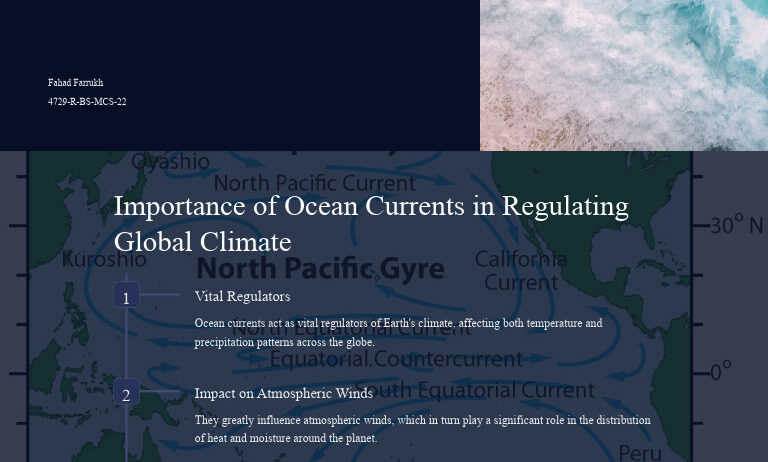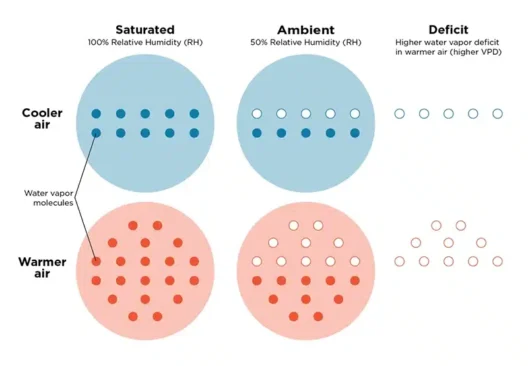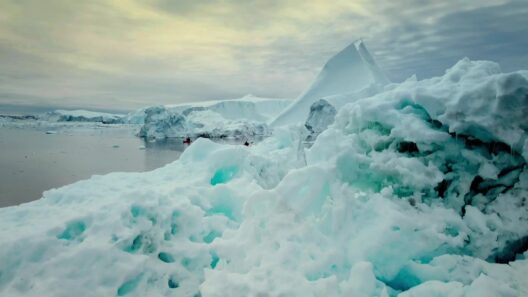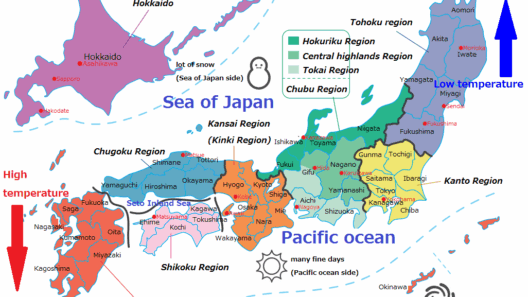The oceans, often referred to as the “Blue Planet’s secret,” wield an immense influence over Earth’s climate system. Covering approximately 71% of the planet’s surface, these vast bodies of water are more than just picturesque landscapes; they function as critical regulators of global temperature, weather patterns, and even the carbon cycle. The intricate relationship between oceans and climate is a captivating saga of chemistry, physics, and biology, all interwoven in an exquisite tapestry that underlies life on Earth.
At first glance, the oceans might seem like vast, inscrutable entities. However, beneath their seemingly tranquil surfaces lies a realm of dynamic processes that shape the climate conditions experienced by terrestrial ecosystems. The oceans absorb a significant percentage of solar radiation, acting as a thermal reservoir. This absorption mitigates temperature fluctuations, stabilizing climatic conditions. Without this buffering effect, life as we know it would be markedly different.
A palpable aspect of the oceans’ influence is their capacity to circulate and distribute heat across the globe. Ocean currents, driven by wind patterns, the Earth’s rotation, and water density differences, act as conveyor belts, transporting warm water from the equator toward the poles, while bringing cold water from the poles toward the equator. The Gulf Stream, for instance, is a pivotal current that influences weather patterns across Europe, bestowing milder winter temperatures than would otherwise occur at similar latitudes. Such phenomena highlight the interconnectedness of various regions, underscoring how changes in oceanic conditions can reverberate far beyond the coastlines.
Perhaps one of the most profound roles oceans play in climate regulation is their function in the carbon cycle. The oceans are estimated to absorb about 30% of the carbon dioxide (CO2) emissions produced by human activities. When CO2 enters ocean waters, it chemically reacts to form carbonic acid. This process not only mitigates the concentration of greenhouse gases in the atmosphere but also plays a critical role in sustaining marine ecosystems. Phytoplankton, microscopic plants in the ocean, harness sunlight to photosynthesize and produce oxygen, all while sequestering carbon and contributing to the ‘biological pump’ that helps transport carbon to the deep ocean.
However, the relationship between oceans and climate is multifaceted and not without challenges. The burgeoning levels of CO2 cause ocean acidification, threatening marine life, particularly organisms with calcifying mechanisms like corals and shellfish. As the ocean becomes more acidic, the very ecosystems that help regulate our climate become vulnerable. Coral reefs, often dubbed the “rainforests of the sea,” support an array of biodiversity. This biodiversity is not only valuable for ecological reasons but also provides essential services, including coastal protection, tourism, and fisheries — all foundational to human economies.
Moreover, the warming of ocean waters has significant implications for weather patterns. The phenomenon of El Niño, which involves fluctuating ocean temperatures in the Pacific, is a classic example of how oceanic changes can lead to widespread atmospheric alterations. These fluctuations can trigger extreme weather events, such as hurricanes, droughts, and floods, impacting agriculture and livelihoods across continents. The unpredictability of these patterns poses challenges for forecasting and preparedness and highlights the profound interconnectedness of oceanic and atmospheric systems.
The oceans also act as a significant player in the hydrological cycle, influencing precipitation patterns and fresh water distribution. Evaporation from the ocean surface contributes to cloud formation, which ultimately leads to rainfall. The interplay of ocean temperatures and atmospheric conditions governs where and how much rain falls. Areas adjacent to oceans often experience moderate climates and ample rainfall, while regions far from the influence of oceanic moisture may encounter drought conditions.
Furthermore, the oceans are vital to regulating the planet’s albedo, or reflective properties. Ice cover in polar regions reflects sunlight, helping to keep global temperatures down. As climate change induces melting glaciers and sea ice, less sunlight is reflected, further exacerbating warming. The loss of these reflective surfaces creates a feedback loop, where changed conditions lead to even more significant climate alterations.
In light of the challenges arising from our changing climate, the need for stewardship of oceanic resources has never been more critical. Protecting marine ecosystems, mitigating pollution, and addressing overfishing are essential steps toward sustaining the oceans’ climate-regulating capabilities. Global collaboration and concerted action are paramount triggers for transformative change. As we deepen our understanding of these majestic bodies of water and their intricate relationship with climate, we are reminded of our responsibility to protect them for future generations.
In summary, the oceans stand as powerful, multifaceted allies in the battle against climate change. They absorb heat, regulate temperature, sequester carbon, and influence weather patterns. Yet, the fragility of these ecosystems necessitates a collective commitment to preservation and sustainable practices. The vast blue expanse is not just a backdrop for human existence; it is an integral player in the climatic symphony that maintains life on Earth. Understanding and respecting the role of oceans is vital for the welfare of our planet, ensuring that the Blue Planet remains habitable for civilizations to come.








